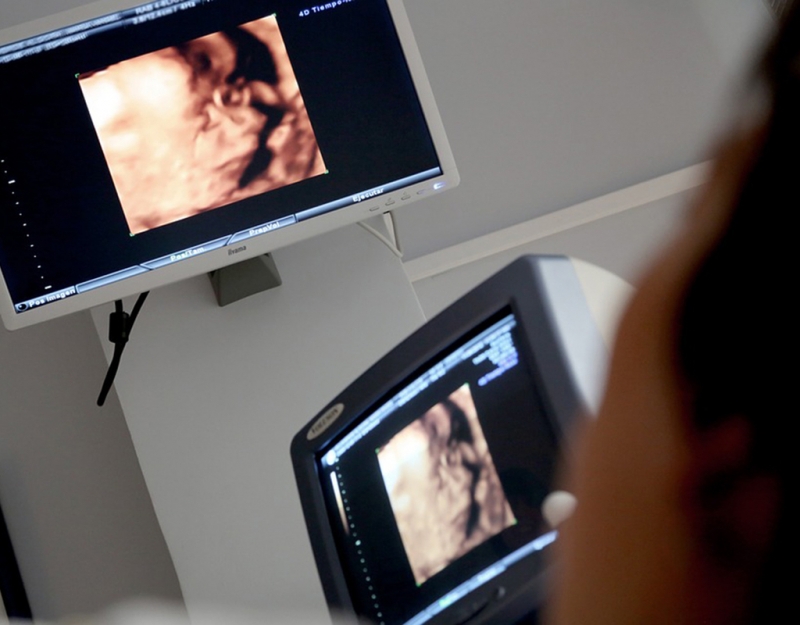Vaginal bleeding during middle to late pregnancy is always of some concern. Significant bleeding (soaking a pad or more) after 20 weeks of pregnancy is referred to as an Antepartum Haemorrhage (APH). Lesser amounts of blood loss may be referred to as spotting or scant loss PV (per vagina).
An antepartum haemorrhage can be caused by bleeding from the cervix or vaginal area (about 50 – 60% of cases), placenta previa (about 20- 25%), placental abruption (about 20- 25%) or vasa previa (very rarely).
Bleeding not associated with the baby or placenta
About 50 to 60% of vaginal bleeding during pregnancy is caused by bleeding from the woman’s cervix or vaginal area, not associated with the unborn baby or placenta. Bleeding commonly presents as bright spotting (fresh bleeding), or brown spotting (bleeding that happened a day or so ago) and may appear as a stain on the underwear, or something noticed when wiping with toilet paper.
Note:
Any vaginal bleeding should be communicated to your caregiver so that possible health concerns can be investigated and ruled out. In many cases, the cause of bleeding is not serious or is unknown, and the pregnancy continues as normal.
There are many possible reasons for vaginal bleeding during pregnancy. These can include:
Polyps
Polyps, or small pieces of tissue overgrowing inside the vagina. Just as skin tags can appear on the skin during pregnancy (due to an increase in the woman’s metabolism), so too can skin tags grow in the vaginal area. Polyps may start to bleed on their own, or through rubbing with sexual intercourse. The caregiver may use a speculum to look inside the vagina after bleeding happens, discovering the polyps. They are not a problem and will usually reduce in size and/or disappear within a few months after the birth. Caregivers generally only advise removing them during pregnancy if they bleed constantly, or are making you very uncomfortable.
An infection or vaginal irritation (vaginitis)
Bleeding may occur if the vagina is very irritated from an infection or a health disorder such as thrush or Gardnerella. If you think you have a vaginal infection, your caregiver may take a vaginal swab and test it to see what type it is and if you need to be treated. Depending on the type of infection, you may be prescribed antifungal medications or possibly antibiotics. Occasionally the infection may be caused by a sexually transmitted infection.
Hormonal bleeds
A few women continue to have light bleeding around the time their period would have been due, for example around 4, 8, 12 and 16 weeks of the pregnancy. This is thought to be associated with mild hormonal changes similar to the menstrual cycle. Hormonal bleeds tend to be more common during the early weeks of pregnancy, but can persist into late pregnancy for a few women. If your caregiver feels this is what is happening, then the bleeding is of no real concern and requires no treatment.
Bleeding after sex
During pregnancy a woman’s cervix softens and has an increased blood supply. For some women, sexual intercourse can sometimes cause light bleeding in the hours or days that follow. This should settle down when resuming sex after the birth of your baby. Be aware that having sex may not always be the reason for the bleeding (just a coincidence). Therefore, let your caregiver know if bleeding has occurred.
Cell changes in the cervix
Vaginal bleeding may be a sign that the cervix is experiencing cell changes that could possibly lead to cervical cancer at some stage in the future. (This can happen for women who are not pregnant as well.) Ideally, you would have had a pap test in the previous year or two before the pregnancy or at your first pregnancy visit. However, if it has been longer since you have had a pap test, or your last pap test showed some mild cell changes, your caregiver may suggest a repeat test, and/or a microscopic examination of the cervix called a colposcopy. In most cases, cell changes in the cervix and any investigations used to look at them should not affect your pregnancy and treatments (if they are needed) can be delayed until after the birth.
Blood from the anus
When women are heavily pregnant, it can be hard to know what is going on ‘around the bottom area’. Sometimes haemorrhoids of the rectum can bleed after going to the toilet to open the bowels. Some women cover their anus with folded toilet paper in one hand and use the other hand to wipe paper on the vaginal area to help make the picture clearer. Bleeding haemorrhoids are generally not of concern and should improve after the birth.
No one knows why
Often the cause of the vaginal bleeding remains unknown. Many pregnant women are examined for bleeding without finding a definite cause (about 30 %). All ultrasounds done appear normal, the baby appears healthy and is growing and everything seems well. The bleeding may never happen again during the pregnancy, or light spotting may occur periodically. If you start to bleed again, let your caregiver know.







Leave A Comment
You must be logged in to post a comment.